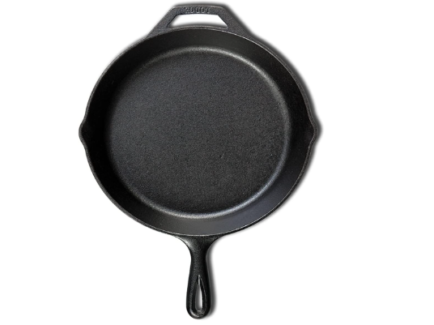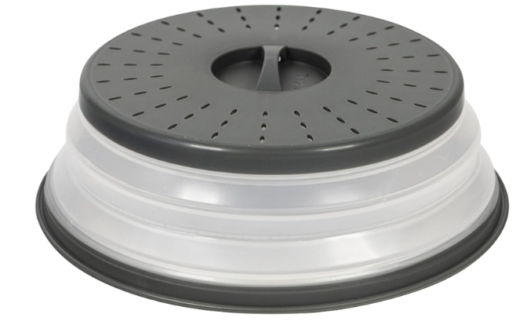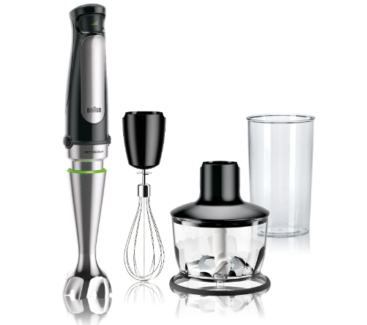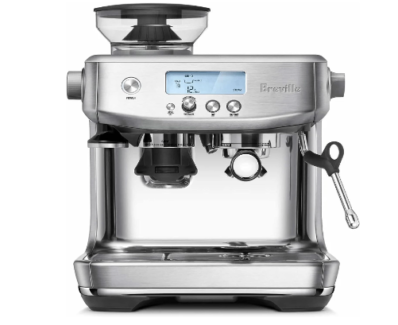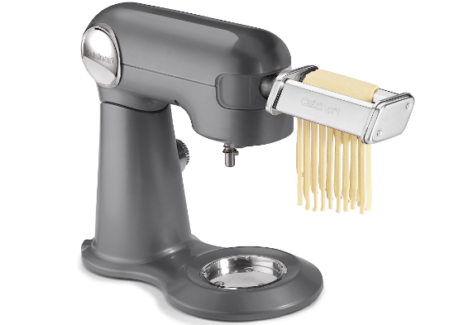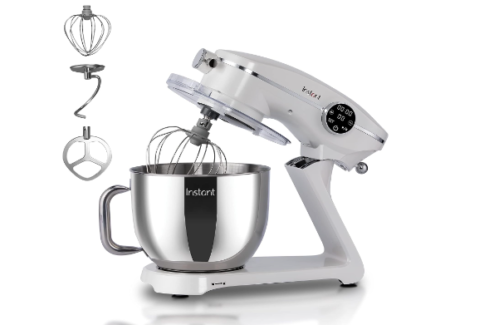A stand mixer is a versatile kitchen appliance that can...
Read More
Sourdough is a type of bread made by fermenting dough with naturally occurring lactobacilli and yeast. It has a unique tangy taste and a chewy texture that sets it apart from other breads. Making sourdough traditionally involves a long process of fermentation and kneading by hand. However, using a stand mixer can make the process easier and less time-consuming while still producing delicious results. In this context, we will discuss the process of making sourdough in a stand mixer.
Is it better to mix sourdough by hand or stand mixer?
Mixing sourdough by hand or using a stand mixer can both be effective methods, but each has its advantages and disadvantages.
Mixing sourdough by hand allows you to feel the dough as it develops and adjust the mixing speed and intensity as needed. This method also allows you to connect with the dough and be more mindful of the process, which can be a meditative and satisfying experience. However, it can be physically demanding and time-consuming, especially if you are making a large batch of dough.
Using a stand mixer can be more efficient and less physically demanding, allowing you to mix larger batches of dough more quickly. It can also be easier to achieve a consistent mixing speed and to monitor the dough’s development. However, some argue that the heat generated by the mixer can affect the fermentation process and alter the flavor of the final product. Additionally, using a stand mixer can be less meditative and less connected to the traditional methods of making sourdough. Ultimately, the choice of whether to mix sourdough by hand or with a stand mixer depends on personal preference and the resources available.
Should you use stand mixer for sourdough?
Using a stand mixer for sourdough is a matter of personal preference. Some bakers prefer to knead their sourdough by hand, as it allows them to feel the texture and consistency of the dough. However, using a stand mixer can save time and effort, especially when making larger batches of sourdough.
It also ensures a more consistent kneading process and can produce a consistent crumb and texture in the final product. Ultimately, whether to use a stand mixer or knead by hand is a matter of personal preference and the amount of time and effort you want to put into making sourdough.
What is the best stand mixer for sourdough?
There are many stand mixers that can be used to make sourdough, and the best one for you will depend on your personal preferences and needs. Some popular stand mixers for sourdough include the KitchenAid Pro 600 Series, the Bosch Universal Plus Mixer, and the Ankarsrum Original Mixer.
These mixers are known for their durability, power, and ability to handle heavy doughs like sourdough. Ultimately, the best stand mixer for sourdough is one that can handle the amount and consistency of dough that you need, and has the features that you find most helpful for your baking needs.
What speed do you knead sourdough in stand mixer?
The speed at which you should knead sourdough in a stand mixer depends on the type of mixer and the amount of dough you are making. As a general guideline, you can start at a low speed, such as speed 1 or 2, and gradually increase the speed to medium or high, such as speed 6 or 8. However, it’s important to monitor the mixer and the dough closely to prevent over-kneading or overheating the motor. Additionally, some stand mixers come with specific instructions for kneading sourdough, so be sure to consult the user manual for guidance.
How long should you knead sourdough in a mixer?
The kneading time for sourdough in a stand mixer can vary depending on the recipe and the type of mixer you are using. However, as a general guideline, you should knead the sourdough in a stand mixer for about 5 to 10 minutes on low to medium speed until the dough comes together and becomes smooth and elastic.
It’s important not to over-knead the dough, as this can break down the gluten structure and result in a dense, tough loaf. To ensure you don’t over-knead, it’s helpful to periodically stop the mixer and check the dough’s consistency by doing a windowpane test or by simply pulling a piece of dough to check its elasticity.
Does sourdough need a lot of kneading?
Sourdough is typically a high-hydration dough, meaning it has a lot of moisture and can be quite sticky. Therefore, it requires a different approach to kneading compared to other bread dough. While some kneading is necessary to develop the gluten, sourdough does not require as much kneading as other types of bread dough. Instead, a technique called “stretch and fold” is often used to strengthen the dough without over-kneading it. The stretch and fold method involves gently pulling and folding the dough over itself several times during the bulk fermentation stage. This allows the gluten to develop and gives the dough structure and strength.
Benefits of using stand mixer to knead sourdough
Using a stand mixer to knead sourdough has several benefits, such as:
- Saves time and energy: Kneading sourdough by hand can be a laborious process, especially if you are making a large batch. A stand mixer can save you time and energy by doing the kneading for you.
- Consistency: A stand mixer can knead the dough evenly and consistently, ensuring that your sourdough has the right texture and structure.
- Controlled environment: A stand mixer provides a controlled environment for kneading, which can be especially helpful in hot or humid weather conditions where the dough can become too sticky or difficult to work with.
- Better results: The consistent kneading and controlled environment of a stand mixer can result in better and more consistent results in terms of texture, flavor, and rise.
Overall, using a stand mixer for sourdough can make the process easier and more efficient while producing consistent and high-quality results.
What is the difference between a sourdough and another dough?
Sourdough is a type of bread made using a natural leavening agent consisting of flour and water that has been fermented over a period of time. The fermentation process allows naturally occurring yeasts and bacteria to develop in the dough, resulting in a complex flavor and texture. In contrast, other bread doughs may use commercial yeast, baking powder, or other leavening agents to create the rise in the bread.
Additionally, sourdough is often characterized by a longer fermentation process than other bread doughs. This extended fermentation allows for greater development of the bread’s flavor and texture, as well as increased digestibility and nutrition. Sourdough is also typically made with a higher hydration level, resulting in a more moist and elastic dough.
Factors to consider when choosing the best stand mixer for sourdough
When choosing the best stand mixer for sourdough, there are a few factors to consider:
- Motor power: Sourdough dough can be quite dense and requires a powerful motor to knead it properly. Look for a stand mixer with a motor of at least 500 watts.
- Bowl size: Sourdough dough can expand quite a bit during the fermentation process, so you will want to ensure that the bowl is large enough to accommodate the dough as it rises.
- Bowl material: Stainless steel bowls are the most durable and easy to clean, but glass bowls are also a good option as they allow you to see the dough as it is being mixed.
- Speed settings: A stand mixer with multiple speed settings will give you more control over the kneading process. Look for a mixer with a slow speed setting for initial mixing and a higher speed setting for kneading.
- Attachments: Some stand mixers come with dough hooks that are specifically designed for kneading bread dough, while others may require you to purchase them separately. Consider what attachments you may need and ensure they are compatible with the mixer you choose.
- Brand reputation: Look for a brand with a reputation for quality and durability, as a stand mixer is an investment that you want to last for many years.
How to make sourdough in stand mixer
Here’s a basic recipe for making sourdough in a stand mixer:
Ingredients:
- 1 cup sourdough starter
- 3 cups bread flour
- 1 1/2 cups warm water
- 2 tsp salt
Instructions:
- In the mixing bowl of your stand mixer, combine the sourdough starter, bread flour, and warm water.
- Using the dough hook attachment, mix the ingredients on low speed until they are just combined. Allow the mixture to rest for about 20 minutes.
- Add the salt to the bowl and knead the dough on low to medium speed for about 10-12 minutes. The dough should be smooth, elastic, and slightly tacky, but not sticky.
- Transfer the dough to a lightly oiled bowl and cover with a damp cloth or plastic wrap. Allow the dough to rise at room temperature until it has doubled in size, which can take anywhere from 4-12 hours depending on the temperature of your kitchen.
- Once the dough has doubled in size, turn it out onto a floured surface and gently deflate it. Shape the dough into a ball or loaf and place it in a floured proofing basket or a greased loaf pan.
- Allow the dough to rise again for about 1-2 hours, or until it has doubled in size once again.
- Preheat your oven to 450°F (230°C). If using a proofing basket, gently invert the basket onto a baking sheet lined with parchment paper. If using a loaf pan, simply place the pan in the oven.
- Bake the sourdough for about 30-40 minutes, or until the crust is golden brown and the loaf sounds hollow when tapped on the bottom. Allow the bread to cool completely on a wire rack before slicing and serving.
How do you know when to stop kneading sourdough?
There are a few ways to determine when to stop kneading sourdough in a mixer. One way is to perform a “windowpane test.” Take a small piece of dough and stretch it out gently between your fingers. If the dough stretches thinly without tearing and you can see light shining through it (like a windowpane), then the gluten has been sufficiently developed and kneading can be stopped.
Another way is to observe the dough’s texture. When the dough is fully kneaded, it should be smooth, elastic, and not sticky. You can also test the dough by pressing a finger into it. If the dough springs back quickly, it has been kneaded enough.
Keep in mind that the ideal kneading time may vary depending on factors such as the type of flour used, hydration level, and the temperature of the dough. It’s important to pay attention to the dough and adjust the kneading time as needed.
How do you know if sourdough is kneaded enough?
There are a few ways to determine if sourdough is kneaded enough:
- Windowpane test: Take a small piece of the dough and gently stretch it out between your fingers. If the dough becomes thin enough to see light through it without tearing, it has reached the desired gluten development and is ready.
- Texture: The dough should have a smooth and elastic texture. If it’s too sticky or too dry, it may need more kneading.
- Time: Depending on the recipe and the type of flour used, sourdough can take anywhere from 5 to 20 minutes of kneading in a stand mixer. Generally, the dough should be kneaded until it’s well-developed and has a good gluten structure.
- Resistance: The dough should resist when pressed down with a finger but still bounce back. If it’s too soft or too hard, it may need more or less kneading, respectively.
- Tackiness: Sourdough dough should be tacky to the touch, but not overly sticky or wet. If it’s too sticky, it may need more flour, and if it’s too dry, it may need more water or hydration.
Can you let sourdough rise too long?
Yes, you can let sourdough rise for too long, and this can lead to overproofing. Overproofed sourdough may collapse and become dense, with a sour taste that is too strong. It may also cause the dough to become sticky and difficult to handle. It’s important to pay attention to the dough during the rising process and to watch for signs that it has risen enough, such as a noticeable increase in volume or the formation of bubbles on the surface.
What is the minimum rise time for sourdough?
The minimum rise time for sourdough can vary depending on various factors such as the temperature, the amount of starter used, and the amount of dough being risen. In general, sourdough requires a longer rise time than commercial yeast dough because sourdough cultures take longer to ferment the dough.
A typical minimum rise time for sourdough is around 4-6 hours, but some recipes may call for longer rise times of 8-12 hours or even overnight. It’s important to keep an eye on the dough and look for visual cues such as increased volume and a puffy, airy texture to determine when the dough is ready for the next step.
How many hours should sourdough rise?
The amount of time that sourdough should rise can vary depending on various factors, such as the temperature and humidity of the environment, the type of flour used, and the strength of the starter. Generally, sourdough requires a longer rise time than commercial yeast bread due to its slower fermentation process. A typical rise time for sourdough can range from 4 to 12 hours, but some recipes may require up to 24 hours or more for a slow and steady rise. It’s important to keep an eye on the dough and look for visual cues, such as the dough doubling in size or becoming puffy and airy, to determine when it has risen enough.
Troubleshooting about stand mixer for sourdough
Here are some troubleshooting tips for using a stand mixer to make sourdough:
- Dough not coming together: If the dough is not coming together in the mixer, try adding more water. Start with small amounts, around 1 tablespoon at a time, until the dough forms a cohesive ball.
- Dough too wet: If the dough is too wet, add more flour, 1 tablespoon at a time, until the dough reaches the desired consistency.
- Dough not rising: If the dough is not rising, it may be due to a number of factors, such as using old or inactive yeast, not allowing the dough enough time to rise, or placing the dough in an environment that is too cold. Make sure to use fresh yeast, allow enough time for the dough to rise, and keep the dough in a warm place.
- Over-kneading the dough: Over-kneading the dough can result in a tough, dense loaf. If you notice the dough becoming too stiff or tough in the mixer, stop kneading and let the dough rest for a few minutes before continuing.
- Mixer overheating: Kneading sourdough for an extended period of time can cause the mixer to overheat. To prevent this, give the mixer a rest every few minutes and only knead for the recommended time.
- Dough sticking to bowl: If the dough is sticking to the sides of the bowl, add a little more flour until the dough pulls away from the sides and forms a ball.
- Inconsistent dough: If the dough is uneven or lumpy, stop the mixer and use a spatula to scrape down the sides of the bowl. Then continue kneading until the dough is smooth and uniform.
Conclusion
Based on the information provided, stand mixers can be a useful tool for kneading pasta dough, roti dough, and sourdough. When choosing a stand mixer for any of these doughs, it is important to consider factors such as motor power, bowl size, and available attachments. The benefits of using a stand mixer for doughs include saving time and effort, achieving consistent results, and allowing for multitasking.
However, it is important to properly maintain and clean the stand mixer to ensure it continues to function effectively. Overall, whether to use a stand mixer or knead dough by hand depends on personal preference and the specific recipe being used.
Related Posts
What is the best stand mixer for pasta dough?
A stand mixer is a versatile kitchen appliance that can...
Read MoreBest Stand Mixer for Bread Dough
Baking bread from scratch can be a rewarding experience, but...
Read MoreWhy Trust Us
You will find what you are looking for at Jody's Bakery. From classic to luxury brands, you'll find both. We will help you to select appliances that fit your needs, budget and lifestyle. Whether you want to stop by to learn more — or plan to make a major purchase — we’ll treat you like family and assist you every step of the way. Shop with us today to receive friendly and experienced help along the way.










